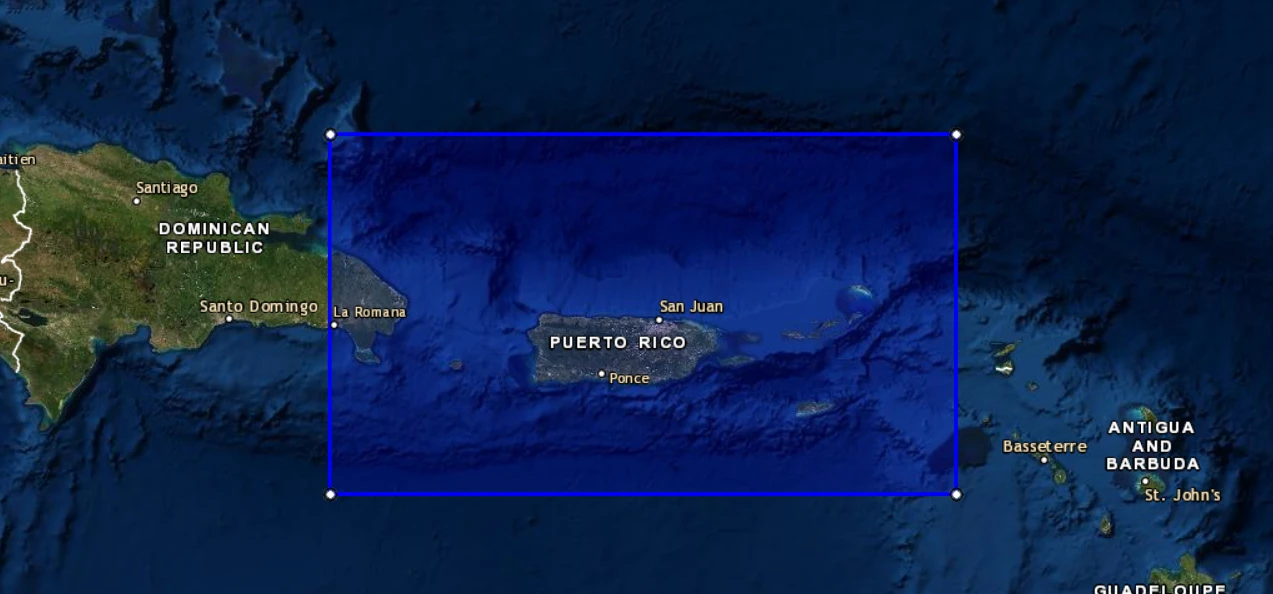Introduction
Your Guide to Understanding Weather Tomorrow is an ever-present force in our lives, influencing everything from our daily routines to the broader climate patterns that shape our environment. Understanding the weather tomorrow can help us prepare for the day ahead, ensuring we make informed decisions about our activities. In this comprehensive article, we’ll delve into the intricacies of weather forecasting, the technologies involved, and how to interpret various weather predictions.
As we embark on this journey to demystify what awaits us in the skies, we’ll explore everything from the science behind weather systems to the impact of climate change on our forecasts. This extended guide aims to provide you with the knowledge to navigate weather predictions confidently.
The Science Behind Weather Forecasting
Weather forecasting is a fascinating blend of science and technology. At its core, it relies on meteorology—the study of the atmosphere and its phenomena. Meteorologists use a combination of observational data, computer models, and algorithms to predict weather conditions. Here’s how it works:
Data Collection
- Weather Stations: These are distributed globally, measuring temperature, humidity, wind speed, and atmospheric pressure. Each station is equipped with sensors that collect data at regular intervals, providing a real-time snapshot of local conditions.
- Automated Weather Stations (AWS): These stations have replaced many manual ones, allowing for continuous data collection with minimal human intervention. They transmit data in real time to central databases, enhancing accuracy.
- Satellites: Equipped with advanced sensors, satellites monitor weather patterns from space, providing crucial data on cloud cover, storms, and temperature variations. Satellites also track larger weather systems, such as hurricanes, allowing for early warnings.
- Geostationary Satellites: These orbit the Earth at the same rate as its rotation, providing continuous coverage of specific regions. They are particularly useful for monitoring developing weather systems in real time.
- Polar-Orbiting Satellites: These satellites travel in orbits that pass over the poles, capturing data over the entire Earth as it rotates underneath them. They are vital for global weather monitoring.
- Radars: Doppler radar systems detect precipitation and storm systems, allowing forecasters to track severe weather in real time. Radar data helps in determining the intensity of storms and predicting their paths.
- Dual-Polarization Radar: This technology enhances precipitation detection by transmitting and receiving signals in both horizontal and vertical orientations, improving the ability to identify precipitation types.
- Weather Buoys: These floating instruments collect data on ocean conditions, including temperature and wave height, which are essential for understanding weather patterns, especially in coastal areas.
- Buoy Networks: Global networks of buoys contribute to the understanding of ocean-atmosphere interactions, providing data critical for hurricane forecasting.
- Weather Balloons: Released into the atmosphere, these balloons carry instruments that measure temperature, humidity, and pressure at various altitudes, providing valuable data on upper-atmosphere conditions.
- Sounding Data: The information collected by weather balloons, known as “sounding data,” is crucial for understanding the vertical profile of the atmosphere, helping meteorologists analyze stability and potential for severe weather.
Data Analysis
Meteorologists analyze this data using computer models that simulate atmospheric conditions. These models consider numerous variables, such as air pressure, temperature gradients, humidity levels, and ocean currents. The interaction of these elements creates the complex systems we experience as weather.
Types of Models
- Numerical Weather Prediction (NWP) Models: These mathematical models simulate the atmosphere’s behavior based on the laws of physics. They are fundamental to modern weather forecasting.
- Ensemble Forecasting: This technique involves running multiple simulations with slightly varied initial conditions to account for uncertainty, helping to produce a range of possible outcomes.
Prediction Models
There are several primary models used in weather forecasting:
- Global Forecast System (GFS): This model offers forecasts up to 16 days ahead, integrating data from various sources. It’s widely used by meteorologists for its comprehensive approach.
- European Centre for Medium-Range Weather Forecasts (ECMWF): Known for its accuracy, this model provides forecasts up to 15 days ahead. It’s often regarded as one of the best models available.
- High-Resolution Models: These are used for short-term predictions and local forecasts, focusing on specific areas. They are particularly useful for predicting severe weather events.
- Climate Models: These models assess long-term trends and patterns, helping to understand how climate change may impact weather systems over decades.
Understanding Model Limitations
While these models are powerful tools, they have limitations. Weather systems are influenced by countless variables, and small changes can lead to different outcomes—a phenomenon known as the “butterfly effect.” Additionally, models rely on accurate initial conditions; any errors in data can propagate through the simulation, leading to inaccuracies in the forecast.
Understanding Weather Terminology
To effectively interpret forecasts for tomorrow’s weather, it’s essential to familiarize yourself with key weather terms:
- Precipitation: Any form of water, liquid or solid, that falls from clouds, including rain, snow, sleet, and hail. Understanding the type of precipitation can help you prepare for outdoor activities.
- Humidity: The amount of moisture in the air. High humidity can make temperatures feel warmer, affecting how we perceive the weather.
- Barometric Pressure: The weight of the atmosphere pressing down on the Earth’s surface. Changes in pressure can indicate upcoming weather changes, such as storm systems.
- Wind Chill: A measure of how cold it feels when the wind is taken into account, often lower than the actual temperature. Wind chill is especially important in winter forecasts.
- Heat Index: A measure that combines air temperature and relative humidity to determine the perceived temperature. High heat indices can indicate dangerous heat conditions.
- Severe Weather Alerts: Notifications issued when severe weather is expected, including thunderstorms, tornadoes, floods, or winter storms. These alerts are crucial for public safety.
- Isotherms: Lines on a weather map connecting points of equal temperature. They help visualize temperature gradients across regions.
- Fronts: Boundaries between two air masses with different temperatures and humidity levels. Understanding fronts is crucial for predicting weather changes.
- Cyclones and Anticyclones: Low-pressure systems (cyclones) and high-pressure systems (anticyclones) that significantly influence weather patterns. Cyclones often bring stormy weather, while anticyclones are associated with clear skies.
How to Access Weather Tomorrow Forecasts
With advancements in technology, accessing weather forecasts has never been easier. Here are some reliable sources for obtaining tomorrow’s weather information:
Websites and Apps
- Weather.com: Provides detailed forecasts, radar maps, and severe weather alerts. Its user-friendly interface allows for quick access to information.
- AccuWeather: Known for its minute-by-minute precipitation forecasts, ideal for planning outdoor activities. AccuWeather also offers long-term forecasts.
- National Weather Service (NWS): Offers authoritative forecasts and warnings, especially for severe weather. NWS is a trusted resource for accurate and up-to-date information.
- Local News Websites: Many local news outlets have dedicated weather sections, often featuring meteorologists who provide tailored forecasts for specific regions.
Local News
Local television stations often have meteorologists who provide tailored forecasts for your area, including insights on regional weather patterns. Watching local news can also keep you informed about any immediate weather changes.
Social Media
Many meteorologists share updates on platforms like Twitter and Instagram, where you can get real-time information and engage with experts. Following trusted meteorologists can provide valuable insights and updates.
Weather Radio
Weather radios are a reliable source for real-time updates, especially during severe weather events. They can alert you to weather warnings, watches, and updates even when other communication channels fail.
SMS Alerts
Many weather services offer SMS alerts for severe weather warnings. Subscribing to these services can keep you informed even when you’re away from your devices.
Community Apps
Local community apps often provide weather updates tailored to your area. These apps can be useful for receiving alerts about localized weather conditions, such as flash floods or severe storms.
Interpreting Tomorrow’s Weather Forecast
When looking at tomorrow’s weather forecast, here’s how to interpret the information presented:
Temperature
The forecast usually provides a high and low temperature. Pay attention to the time of day; temperatures can vary significantly, especially in regions with varied climates. Understanding daily temperature fluctuations can help you dress appropriately.
- Daily High and Low: This data indicates the expected peak and minimum temperatures throughout the day, helping you plan accordingly.
- Temperature Trends: Observing temperature trends over several days can provide insights into broader weather patterns, such as warming trends or cold fronts.
Precipitation Chances
This percentage indicates the likelihood of precipitation. A 30% chance means there is a moderate possibility of rain. It’s essential to plan accordingly if you might be caught in a shower. Always consider the context of the percentage—high percentages with low amounts might still result in a drizzle, while lower percentages can lead to significant rainfall in localized areas.
- Rainfall Amounts: Forecasts often include expected rainfall amounts, which help you prepare for potential flooding or water accumulation.
- Type of Precipitation: Knowing whether precipitation is expected to be rain, snow, or sleet can influence your plans significantly.
Wind Speed and Direction
Wind can dramatically affect how cold it feels outside. Check the wind chill factor, especially in colder months, to dress appropriately. Understanding wind direction can also help you plan outdoor activities, as some winds bring warmer or cooler air.
- Gusts: Forecasts may indicate wind gusts, which are sudden increases in wind speed that can impact outdoor activities and safety.
- Wind Patterns: Understanding prevailing wind patterns can provide insights into potential weather changes, as certain winds can signal approaching fronts.
Weather Alerts
Look out for any weather alerts, such as severe thunderstorm warnings or winter storm watches, which can impact safety and travel plans. Being aware of these alerts allows you to take necessary precautions.
- Tornado Watches vs. Warnings: A watch indicates conditions are favorable for tornadoes, while a warning means a tornado has been spotted or indicated by radar, requiring immediate action.
- Flood Warnings: Understanding flood alerts can help you prepare for potential flooding, whether through sandbagging or evacuation plans.
Forecast Maps
Many weather services provide visual representations of forecasts, including radar maps, temperature maps, and precipitation forecasts. These visuals can help you grasp the broader picture of expected weather conditions.
- Severe Weather Maps: These maps indicate areas at risk for severe weather, helping you stay informed about potential dangers in your region.
- Interactive Maps: Many weather websites offer interactive maps that allow you to zoom in on your area for more detailed forecasts.
The Impact of Weather on Daily Life
Understanding the weather for tomorrow can significantly affect your daily life. Here’s how:
Outdoor Activities
Whether you’re planning a picnic, a hike, or a trip to the beach, knowing the weather helps you choose the best day. For instance, a sunny forecast is ideal for outdoor events, while rain predictions might prompt you to reschedule.
Planning for Events
Consider the weather when planning significant events such as weddings or outdoor parties. Understanding seasonal weather patterns can guide you in choosing the best time of year.
- Backup Plans: For outdoor events, always have a contingency plan in case of inclement weather. This could mean renting a tent or having an indoor location available.
Sports and Recreation
Athletes and outdoor enthusiasts often rely on accurate weather forecasts. For example, marathon runners may need to adjust their training schedules based on predicted heat or rain.
- Safety Considerations: Understanding weather conditions can also help in assessing safety for activities such as hiking, skiing, or biking.
- Seasonal Sports: Different sports have different optimal weather conditions. For instance, baseball is typically played in drier, warmer months, while skiing is best in winter.
Travel Plans
Weather can impact travel, whether by air or road. For air travel, storms can cause delays or cancellations. If driving, check for adverse conditions like snow, fog, or heavy rain.
Long-Distance Travel
When planning long-distance trips, consult forecasts for each destination along the route. This ensures you’re prepared for varying weather conditions, especially in different geographical areas.
- Road Conditions: Some weather apps provide real-time updates on road conditions, which can help you avoid hazardous driving situations.
- Packing Considerations: Knowing the weather at your destination can inform your packing decisions, ensuring you have appropriate clothing and gear.
Vacation Planning
When booking vacations, consider seasonal weather trends. Researching climate conditions for your destination can help you choose the best time to visit.
- Peak Seasons: Understanding peak tourist seasons can help you plan trips when weather is ideal, and crowds are manageable.
- Travel Insurance: Consider purchasing travel insurance that covers weather-related cancellations or disruptions, providing peace of mind for your travel plans.
Health Considerations
Extreme weather conditions can affect health. For instance, high heat can lead to heat exhaustion, while cold weather may increase the risk of hypothermia. Understanding the forecast allows individuals to take precautions.
Allergies and Air Quality
Certain weather conditions can exacerbate allergies, such as high pollen counts in spring. Understanding weather patterns can help allergy sufferers prepare and manage their symptoms effectively.
- Air Quality Index (AQI): Monitoring the AQI can be crucial for individuals with respiratory issues, helping them avoid outdoor activities on days with poor air quality.
Mental Health
Weather can also affect mental health. Seasonal Affective Disorder (SAD) is a condition influenced by seasonal changes in light and temperature. Being aware of upcoming weather can help individuals prepare mentally.
- Sunlight Exposure: In winter months, consider ways to increase exposure to natural light, such as taking walks during daylight hours or using light therapy lamps.
- Community Support: Engaging in community activities or support groups can help individuals cope with seasonal changes that may impact mood.
Agriculture and Business
Farmers rely heavily on weather forecasts to plan planting and harvesting schedules. Similarly, businesses in outdoor sectors, like construction and tourism, must adapt based on weather conditions.
Crop Management
Farmers use forecasts to determine the best times for planting and harvesting. For instance, predicting rain can influence irrigation schedules.
- Pest and Disease Control: Weather conditions can affect pest populations and the spread of diseases, requiring farmers to adjust their management practices accordingly.
- Market Prices: Understanding weather patterns can also help farmers anticipate market trends, as crop yields can significantly impact prices.
Tourism Industry
The tourism industry is significantly impacted by weather. Operators often adjust their offerings based on expected weather conditions, promoting indoor activities during inclement weather.
- Promotions: Tour operators may create special promotions for indoor activities during bad weather, encouraging visitors to engage in alternative attractions.
- Event Planning: Festivals and events may need to be rescheduled or relocated based on weather forecasts, impacting tourism revenue.
Climate Change and Its Influence on Weather Forecasting
Climate change has been reshaping weather patterns globally, making accurate forecasting even more crucial. Here’s how:
Changing Weather Patterns
As global temperatures rise, we’re seeing shifts in weather patterns, including more frequent and intense storms, prolonged droughts, and changes in precipitation. These factors complicate forecasting and require continuous adaptation.
Extreme Weather Events
The increasing frequency of extreme weather events—such as hurricanes, floods, and wildfires—underscores the importance of reliable forecasts. Accurate predictions can save lives and mitigate damage.
- Adaptation Strategies: Communities are developing strategies to adapt to changing weather patterns, including improved infrastructure and emergency response plans.
Advances in Technology
Meteorologists are leveraging technology to improve predictive models and accuracy. Artificial intelligence and machine learning are being utilized to analyze vast datasets and enhance prediction capabilities.
Big Data in Meteorology
The integration of big data allows meteorologists to analyze historical weather patterns alongside real-time data, improving the accuracy of forecasts.
- Data Mining: Using advanced algorithms to mine vast amounts of weather data helps identify patterns that may not be immediately apparent.
Improved Simulation Models
Advancements in computing power enable more complex simulations of weather systems, allowing meteorologists to predict outcomes with greater precision.
- High-Resolution Models: These models can simulate smaller weather features, such as thunderstorms, leading to more accurate short-term forecasts.
Community Preparedness
Communities are increasingly focusing on preparedness, implementing systems to inform residents about severe weather. Understanding local climate changes helps communities better prepare for and respond to extreme events.
Public Awareness Campaigns
Local governments and organizations often run campaigns to educate the public about severe weather preparedness. These initiatives can include training sessions, distributing informational materials, and setting up emergency response plans.
- Community Drills: Engaging in community drills for severe weather events can help residents know how to respond effectively.
Resilience Building
Building resilience in communities involves preparing for the impacts of climate change. This can include investing in infrastructure improvements, such as better drainage systems to handle heavy rainfall.
- Green Infrastructure: Implementing green infrastructure, such as permeable pavements and green roofs, can help mitigate flooding and manage stormwater.
The Future of Weather Forecasting
The future of weather forecasting is promising, with ongoing advancements aimed at improving accuracy and accessibility. Here are some key trends to watch:
Enhanced Data Collection
With the proliferation of IoT devices and drones, data collection will become more comprehensive, allowing for better localized forecasts. These advancements will lead to more accurate predictions, especially in urban areas where microclimates exist.
- Crowdsourced Data: Citizen reports of local weather conditions can supplement professional data, improving forecasting in specific areas.
Improved Modeling Techniques
As computing power increases, forecasting models will become more sophisticated, leading to more accurate long-term predictions. Enhanced models will also take into account various climate scenarios, helping policymakers make informed decisions.
- Climate Models Integration: Combining weather forecasting models with climate models will help predict longer-term trends and impacts on specific regions.
Public Engagement
Educational initiatives will help the public understand weather phenomena better, fostering a culture of preparedness and safety. Increased engagement can lead to a more informed populace that takes weather forecasts seriously.
- School Programs: Implementing weather education programs in schools can help future generations appreciate and understand the importance of weather forecasting.
Citizen Science
The rise of citizen science allows individuals to contribute to weather data collection, enhancing the information available for forecasting. This grassroots approach can improve local weather insights and foster community involvement.
- Community Weather Stations: Encouraging communities to set up their weather stations can provide valuable localized data for meteorologists.
Global Collaboration
International cooperation among meteorological organizations will enhance the sharing of data and resources, leading to better forecasting on a global scale. Collaborative efforts can improve early warning systems for severe weather events.
- Shared Resources: Collaborations can lead to shared resources for research and data collection, improving global understanding of weather systems.
Conclusion
Understanding the weather tomorrow is more than just checking a forecast; it’s about being prepared for whatever nature throws our way. With the right knowledge, tools, and resources, you can navigate your daily life with confidence, no matter the weather.
As technology continues to evolve, so will our ability to predict and understand the atmospheric conditions that impact our world. By staying informed and engaged, you can make weather forecasts work for you, ensuring you’re always prepared for what lies ahead.
Weather is a dynamic and fascinating subject, and by embracing the science behind it, you can enhance your daily life and contribute to a more informed and prepared society. So, the next time you check tomorrow’s weather, remember the intricate processes at play and how they influence your world. Stay informed, stay prepared, and embrace the ever-changing tapestry of weather.for more posts read this networksights.com














Leave a Reply